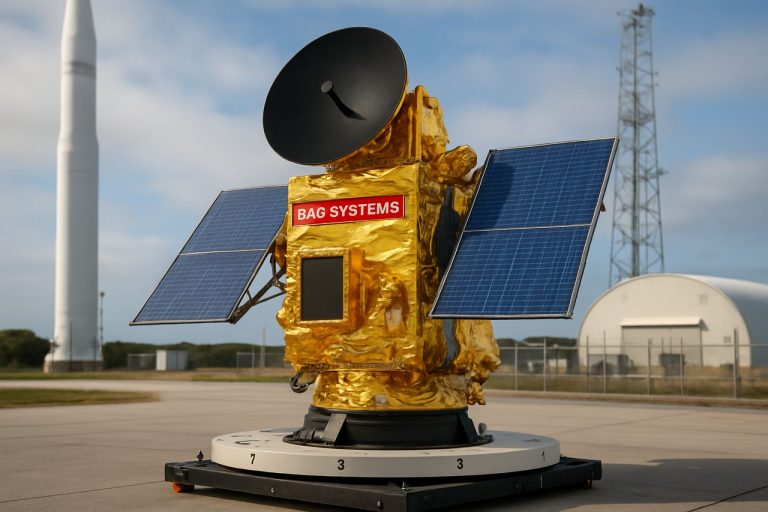
Biofeedback Wearable Technology Market Report 2025: In-Depth Analysis of Growth Drivers, Innovations, and Global Opportunities. Explore Market Size, Leading Players, and Future Trends Shaping the Industry.
- Executive Summary & Market Overview
- Key Technology Trends in Biofeedback Wearables
- Competitive Landscape and Leading Companies
- Market Growth Forecasts (2025–2030): CAGR, Revenue, and Volume Analysis
- Regional Market Analysis: North America, Europe, Asia-Pacific, and Rest of World
- Future Outlook: Emerging Applications and Investment Hotspots
- Challenges, Risks, and Strategic Opportunities
- Sources & References
Executive Summary & Market Overview
Biofeedback wearable technology refers to devices that monitor physiological signals—such as heart rate variability, skin temperature, muscle activity, and brainwaves—and provide real-time feedback to users, enabling them to self-regulate stress, improve health, and optimize performance. In 2025, the global biofeedback wearable technology market is experiencing robust growth, driven by rising consumer health awareness, the proliferation of connected health devices, and increasing adoption in both clinical and consumer wellness settings.
According to Grand View Research, the global biofeedback devices market was valued at approximately USD 1.6 billion in 2023 and is projected to expand at a compound annual growth rate (CAGR) of over 7% through 2030. Wearable biofeedback devices—such as smartwatches, fitness bands, and specialized neurofeedback headsets—are a key segment fueling this expansion. The integration of advanced sensors, artificial intelligence, and cloud connectivity has enabled more accurate, user-friendly, and actionable biofeedback solutions, broadening their appeal beyond traditional medical applications to include sports, mental wellness, and workplace productivity.
Major technology companies and startups alike are investing in this space. For example, Apple Inc. and Fitbit (now part of Google) have incorporated biofeedback features such as ECG, SpO2, and stress monitoring into their mainstream wearables. Meanwhile, specialized firms like Muse and Emotiv are advancing neurofeedback headsets for meditation and cognitive training. The convergence of biofeedback with digital therapeutics is also notable, as companies like Happify Health and HeartMath offer platforms that combine wearable data with behavioral interventions.
- North America remains the largest market, attributed to high healthcare spending, early technology adoption, and supportive regulatory frameworks.
- Asia-Pacific is the fastest-growing region, propelled by increasing smartphone penetration, urbanization, and a burgeoning middle class seeking preventive health solutions.
- Key challenges include data privacy concerns, device accuracy, and the need for greater clinical validation to support broader medical adoption.
In summary, the biofeedback wearable technology market in 2025 is characterized by rapid innovation, expanding use cases, and growing consumer and institutional demand, positioning it as a pivotal segment within the broader digital health ecosystem.
Key Technology Trends in Biofeedback Wearables
Biofeedback wearable technology in 2025 is characterized by rapid advancements in sensor miniaturization, data analytics, and integration with artificial intelligence (AI), driving both consumer adoption and clinical applications. These devices, which monitor physiological signals such as heart rate variability (HRV), skin conductance, muscle activity, and brainwaves, are increasingly leveraging multi-sensor arrays to provide more comprehensive and accurate real-time feedback.
One of the most significant trends is the shift toward multi-modal sensing. Leading manufacturers are embedding multiple biosensors—such as photoplethysmography (PPG), electrodermal activity (EDA), and electromyography (EMG)—into a single device, enabling richer data collection and more nuanced insights into stress, sleep, and emotional states. For example, the latest generation of wearables from Empatica and WHOOP combine HRV, skin temperature, and movement data to deliver personalized health recommendations.
AI-driven analytics are another key trend, with machine learning algorithms now capable of detecting subtle physiological patterns and predicting health events. These algorithms are being used to tailor feedback and interventions, such as guided breathing or mindfulness exercises, based on real-time user data. Fitbit and Garmin have both integrated AI-powered stress and sleep analysis features into their latest models, enhancing user engagement and perceived value.
Interoperability and ecosystem integration are also gaining traction. Biofeedback wearables are increasingly designed to sync seamlessly with telehealth platforms, electronic health records (EHRs), and third-party wellness apps. This trend is supported by open APIs and partnerships between device makers and healthcare providers, as seen in collaborations between Apple and major health systems to enable data sharing for remote patient monitoring.
Finally, form factor innovation is expanding the range of use cases. Beyond wristbands and smartwatches, companies are introducing discreet patches, smart clothing, and even ear-worn devices, broadening the appeal to new demographics and clinical populations. According to IDC, the global market for wearable devices is expected to surpass 600 million units shipped in 2025, with biofeedback-enabled devices representing a significant share of this growth.
Competitive Landscape and Leading Companies
The competitive landscape of the biofeedback wearable technology market in 2025 is characterized by rapid innovation, strategic partnerships, and a growing number of entrants leveraging advances in sensor technology, artificial intelligence, and data analytics. The market is highly fragmented, with both established medical device manufacturers and agile startups vying for market share across consumer wellness, sports performance, and clinical health segments.
Leading companies in this space include Apple Inc., whose Apple Watch integrates heart rate variability (HRV) and mindfulness features, and Fitbit (now part of Google), which continues to expand its suite of stress management and sleep tracking tools. WHOOP has gained significant traction among athletes and fitness enthusiasts with its subscription-based model and advanced recovery analytics. Garmin Ltd. remains a key player, offering wearables with biofeedback capabilities such as pulse oximetry and respiration tracking.
In the clinical and mental health domain, Muse stands out for its EEG-based headbands that provide real-time neurofeedback for meditation and stress reduction. EMOTIV and Neurosteer are also notable for their focus on brain-computer interface (BCI) applications, targeting both research and therapeutic markets.
Startups such as Oura Health (Oura Ring) and Biometric Sports are pushing the envelope with ring-based and patch-based sensors, respectively, offering continuous monitoring of physiological signals like skin temperature, electrodermal activity, and HRV. These companies are increasingly forming partnerships with healthcare providers and insurers to validate clinical efficacy and expand reimbursement pathways.
- Market leaders are investing heavily in R&D to improve sensor accuracy, battery life, and user experience.
- Data privacy and regulatory compliance (e.g., FDA clearance, CE marking) are becoming key differentiators as wearables move from wellness to medical-grade applications.
- Strategic collaborations—such as Fitbit’s partnerships with health systems and Apple’s research initiatives—are accelerating the integration of biofeedback data into broader digital health ecosystems.
Overall, the competitive landscape in 2025 is defined by a blend of technological innovation, cross-sector partnerships, and a race to secure regulatory approvals, positioning leading companies to capture growing demand for personalized, real-time biofeedback solutions.
Market Growth Forecasts (2025–2030): CAGR, Revenue, and Volume Analysis
The biofeedback wearable technology market is poised for robust growth between 2025 and 2030, driven by increasing consumer awareness of health monitoring, advances in sensor technology, and the integration of artificial intelligence for personalized feedback. According to projections by Grand View Research, the global biofeedback devices market, which includes wearables, is expected to register a compound annual growth rate (CAGR) of approximately 7.5% during this period. This growth is underpinned by rising demand for non-invasive health management solutions and the proliferation of connected health ecosystems.
Revenue forecasts indicate that the biofeedback wearable segment will outpace traditional biofeedback devices, with market revenues anticipated to reach over $1.2 billion by 2030, up from an estimated $700 million in 2025. This surge is attributed to the increasing adoption of smartwatches, fitness bands, and specialized medical-grade wearables that monitor physiological parameters such as heart rate variability, skin conductance, and muscle activity. MarketsandMarkets highlights that the integration of biofeedback features into mainstream consumer wearables is a key driver, expanding the addressable market beyond clinical settings to include wellness and preventive healthcare.
In terms of volume, unit shipments of biofeedback wearables are projected to grow at a CAGR exceeding 8% from 2025 to 2030. The Asia-Pacific region is expected to witness the fastest growth, fueled by increasing healthcare expenditure, a burgeoning middle class, and government initiatives promoting digital health. North America will continue to dominate in terms of revenue, owing to high consumer awareness and the presence of leading technology companies such as Apple Inc. and Fitbit (now part of Google), which are actively incorporating biofeedback capabilities into their product lines.
- Projected CAGR (2025–2030): 7.5% (revenue), 8%+ (unit volume)
- Estimated market revenue: $1.2 billion by 2030
- Key growth regions: Asia-Pacific (fastest), North America (largest revenue share)
- Major drivers: Consumer health awareness, AI integration, expansion into wellness markets
Overall, the biofeedback wearable technology market is set for significant expansion, with innovation and consumer adoption shaping its trajectory through 2030.
Regional Market Analysis: North America, Europe, Asia-Pacific, and Rest of World
The global biofeedback wearable technology market is experiencing robust growth, with regional dynamics shaped by healthcare infrastructure, consumer awareness, and regulatory environments. In 2025, North America, Europe, Asia-Pacific, and the Rest of the World (RoW) each present distinct opportunities and challenges for market participants.
- North America: North America remains the largest market for biofeedback wearables, driven by high healthcare expenditure, advanced digital health ecosystems, and strong consumer adoption of wellness technologies. The United States, in particular, benefits from a mature telehealth infrastructure and supportive reimbursement policies for digital therapeutics. Leading companies such as Fitbit and Apple continue to innovate, integrating biofeedback features into mainstream wearables. According to Grand View Research, North America accounted for over 40% of the global market share in 2024, a trend expected to persist through 2025.
- Europe: Europe’s market is characterized by strong regulatory oversight and growing emphasis on preventive healthcare. Countries like Germany, the UK, and the Nordics are at the forefront, with government initiatives supporting digital health adoption. The European Union’s Medical Device Regulation (MDR) has prompted manufacturers to enhance product safety and efficacy, fostering consumer trust. Companies such as Emotiv and Muse have expanded their presence, targeting both clinical and consumer segments. Fortune Business Insights projects steady growth in the region, with a CAGR of over 7% through 2025.
- Asia-Pacific: The Asia-Pacific region is witnessing the fastest growth, fueled by rising healthcare awareness, increasing disposable incomes, and rapid urbanization. Markets in China, Japan, and South Korea are particularly dynamic, with local players such as Omron Healthcare investing in R&D and partnerships. Government initiatives to digitize healthcare and manage chronic diseases are accelerating adoption. MarketsandMarkets highlights Asia-Pacific as the most promising region, with double-digit growth expected in 2025.
- Rest of World (RoW): In Latin America, the Middle East, and Africa, market penetration remains limited but is gradually increasing due to mobile health initiatives and international collaborations. Brazil and the UAE are emerging as early adopters, leveraging telemedicine to expand access to biofeedback solutions. However, challenges such as limited infrastructure and regulatory hurdles persist, tempering growth prospects in the near term.
Future Outlook: Emerging Applications and Investment Hotspots
Looking ahead to 2025, the biofeedback wearable technology market is poised for significant evolution, driven by advances in sensor miniaturization, AI-powered analytics, and growing consumer demand for personalized health solutions. Emerging applications are expanding beyond traditional stress management and fitness tracking, with new use cases in mental health, chronic disease management, and even workplace productivity.
One of the most promising frontiers is the integration of biofeedback wearables into mental health care. Devices capable of monitoring physiological markers such as heart rate variability, skin conductance, and respiration are being leveraged to detect early signs of anxiety, depression, and burnout. Startups and established players alike are developing platforms that combine real-time biofeedback with cognitive behavioral therapy (CBT) modules, offering users actionable insights and interventions. This trend is supported by increasing clinical validation and regulatory acceptance, as seen in recent FDA clearances for digital therapeutics incorporating wearable biofeedback components (U.S. Food and Drug Administration).
Chronic disease management is another emerging application area. Wearables are being tailored to monitor and provide feedback for conditions such as hypertension, diabetes, and migraine. For example, continuous blood pressure monitoring and glucose trend analysis, combined with haptic or visual feedback, empower patients to make real-time lifestyle adjustments. Partnerships between device manufacturers and healthcare providers are accelerating the integration of these solutions into remote patient monitoring programs (Abbott; Medtronic).
Investment hotspots are shifting toward platforms that offer interoperability with electronic health records (EHRs) and telehealth services. Venture capital is flowing into startups that enable seamless data sharing between wearables and healthcare ecosystems, addressing a key barrier to large-scale adoption (CB Insights). Additionally, workplace wellness is emerging as a lucrative segment, with enterprises investing in biofeedback wearables to monitor employee stress and promote well-being, aiming to reduce absenteeism and boost productivity (Gartner).
Geographically, North America and Europe remain the primary investment destinations due to favorable regulatory environments and high digital health adoption rates. However, Asia-Pacific is rapidly gaining traction, fueled by rising healthcare expenditures and a burgeoning middle class seeking proactive health management solutions (Mordor Intelligence).
Challenges, Risks, and Strategic Opportunities
The biofeedback wearable technology market in 2025 faces a complex landscape of challenges, risks, and strategic opportunities as it matures and expands across healthcare, wellness, and consumer segments. One of the primary challenges is data privacy and security. As biofeedback devices collect sensitive physiological data—such as heart rate variability, skin conductance, and brainwave activity—manufacturers must comply with stringent regulations like HIPAA in the U.S. and GDPR in Europe. High-profile breaches or misuse of health data could erode consumer trust and invite regulatory scrutiny, potentially stalling market growth (U.S. Food and Drug Administration).
Another significant risk is the variability in clinical validation and efficacy. While some biofeedback wearables are supported by robust clinical evidence, many consumer-grade devices lack rigorous validation, leading to skepticism among healthcare professionals and payers. This inconsistency can hinder integration into clinical workflows and limit reimbursement opportunities (Mayo Clinic). Additionally, the rapid pace of technological innovation creates a risk of obsolescence, as companies must continually invest in R&D to keep pace with advances in sensor technology, AI-driven analytics, and user interface design.
Strategic opportunities, however, are substantial. The growing prevalence of chronic conditions such as stress, anxiety, and cardiovascular diseases is driving demand for personalized, non-invasive monitoring and intervention tools. Partnerships between wearable manufacturers and healthcare providers are emerging as a key strategy to enhance clinical credibility and expand market reach. For example, collaborations with telehealth platforms can enable remote patient monitoring and real-time biofeedback interventions, aligning with broader trends in digital health (Grand View Research).
- Integration with AI and machine learning offers the potential for more accurate, predictive insights, differentiating products in a crowded market.
- Expansion into emerging markets, where mobile health adoption is accelerating, presents new growth avenues, though it requires adaptation to local regulatory and cultural contexts.
- Developing open APIs and interoperability standards can facilitate integration with electronic health records (EHRs) and broader health IT ecosystems, increasing device utility and stickiness.
In summary, while biofeedback wearable technology faces notable hurdles in 2025, companies that proactively address regulatory, clinical, and technological risks—and leverage strategic partnerships and innovation—are well-positioned to capture expanding opportunities in both consumer and clinical domains.
Sources & References
- Grand View Research
- Apple Inc.
- Fitbit (now part of Google)
- HeartMath
- Empatica
- WHOOP
- IDC
- Muse
- MarketsandMarkets
- Fortune Business Insights
- Medtronic
- Mordor Intelligence
- Mayo Clinic



